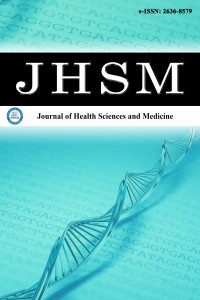1.
Kao DD, Ferrandino RM, Roof SA, et al. Neutrophil-to-lymphocyte ratio as a predictor of surgical outcomes in head and neck cancer. Head Neck. 2023;45(8):1903-1912. doi:10.1002/HED.27402
2.
Hay SI, Abajobir AA, Abate KH, et al. Global, regional, and national disability-adjusted life-years (DALYs) for 333 diseases and injuries and healthy life expectancy (HALE) for 195 countries and territories, 1990-2016: a systematic analysis for the global burden of disease study 2016. Lancet. 2017;390(10100):1260-1344. doi:10.1016/S0140-6736(17)32130-X
3.
Ji Z, Liu G, Guo J, et al. The neutrophil-to-lymphocyte ratio is an important indicator predicting in-hospital death in AMI patients. Front Cardiovasc Med. 2021;8. doi:10.3389/FCVM.2021.706852
4.
Ishida S, Hashimoto I, Seike T, Abe Y, Nakaya Y, Nakanishi H. Serum albumin levels correlate with inflammation rather than nutrition supply in burns patients: a retrospective study. J Med Invest. 2014;61(3-4):361-368. doi:10.2152/JMI.61.361
5.
Oduncu V, Erkol A, Karabay CY, et al. The prognostic value of serum albumin levels on admission in patients with acute ST-segment elevation myocardial infarction undergoing a primary percutaneous coronary intervention. Coron Artery Dis. 2013;24(2):88-94. doi:10.1097/MCA.0B013E32835C46FD
6.
Cui H, Ding X, Li W, Chen H, Li H. The neutrophil percentage to albumin ratio as a new predictor of in-hospital mortality in patients with ST-segment elevation myocardial infarction. Med Sci Monit. 2019; 25:7845-7852. doi:10.12659/MSM.917987
7.
Sun T, Shen H, Guo Q, et al. Association between neutrophil percentage-to-albumin ratio and all-cause mortality in critically ill patients with coronary artery disease. Biomed Res Int. 2020;2020. doi:10.1155/2020/ 8137576
8.
Kaya MG. Inflammation and coronary artery disease: as a new biomarker neutrophil/lymphocyte ratio. Turk Kardiyol Dern Ars. 2013; 41(3):191-192. doi:10.5543/TKDA.2013.84484
9.
Ylmaz S, Canpolat U, Baer K, Unal S, Kuyumcu MS, Aydodu S. Neutrophil-to-lymphocyte ratio predicts functionally significant coronary artery stenosis in patients with stable coronary artery disease. Turk Kardiyol Dern Ars. 2018;46(2):129-135. doi:10.5543/TKDA.2017. 16709
10.
Eckart A, Struja T, Kutz A, et al. Relationship of nutritional status, inflammation, and serum albumin levels during acute illness: a prospective study. Am J Med. 2020;133(6):713-722.e7. doi:10.1016/J.AMJMED.2019.10.031
11.
Levitt DG, Levitt MD. Human serum albumin homeostasis: a new look at the roles of synthesis, catabolism, renal and gastrointestinal excretion, and the clinical value of serum albumin measurements. Int J Gen Med. 2016;9:229-255. doi:10.2147/IJGM.S102819
12.
González-Pacheco H, Amezcua-Guerra LM, Sandoval J, et al. Prognostic implications of serum albumin levels in patients with acute coronary syndromes. Am J Cardiol. 2017;119(7):951-958. doi:10.1016/J.AMJCARD.2016.11.054
13.
Kurtul A, Ocek AH, Murat SN, et al. Serum albumin levels on admission are associated with angiographic no-reflow after primary percutaneous coronary intervention in patients with ST-segment elevation myocardial infarction. Angiology. 2015;66(3):278-285. doi:10.1177/ 0003319714526035
14.
Gong Y, Li D, Cheng B, Ying B, Wang B. Increased neutrophil percentage-to-albumin ratio is associated with all-cause mortality in patients with severe sepsis or septic shock. Epidemiol Infect. 2020;148. doi:10.1017/S0950268820000771
15.
Wang B, Li D, Cheng B, Ying B, Gong Y. The neutrophil percentage-to-albumin ratio is associated with all-cause mortality in critically ill patients with acute kidney injury. Biomed Res Int. 2020;2020. doi:10. 1155/2020/5687672
16.
Yu Y, Liu Y, Ling X, et al. The Neutrophil percentage-to-albumin ratio as a new predictor of all-cause mortality in patients with cardiogenic shock. Biomed Res Int. 2020;2020. doi:10.1155/2020/7458451
17.
Cai C, Zhang B, Sun T, et al. Neutrophil percentage to albumin ratio was associated with clinical outcomes in coronary care unit patients. Rev Cardiovasc Med. 2022;23:10. doi:10.31083/j.rcm2310333
18.
Cui H, Ding X, Li W, Chen H, Li H. The neutrophil percentage to albumin ratio as a new predictor of in-hospital mortality in patients with ST-segment elevation myocardial infarction. Medical Science Monitor. 2019;25:7845-7852. doi:10.12659/MSM.917987
19.
Lamas GA, Flaker GC, Mitchell G, et al. Effect of infarct artery patency on prognosis after acute myocardial infarction. The survival and ventricular enlargement investigators. Circulation. 1995;92(5):1101-1109. doi:10.1161/01.CIR.92.5.1101
20.
Mehta RH, Harjai KJ, Cox D, et al. Clinical and angiographic correlates and outcomes of suboptimal coronary flow in patients with acute myocardial infarction undergoing primary percutaneous coronary intervention. J Am Coll Cardiol. 2003;42(10):1739-1746. doi:10.1016/j.jacc.2003.07.012
21.
Dogan M, Akyel A, Bilgin M, et al. Can admission neutrophil to lymphocyte ratio predict infarct-related artery patency in st-segment elevation myocardial infarction. Clin Appl Thromb Hemost. 2015;21(2): 172-176. doi:10.1177/1076029613515071
22.
Maden O, Kacmaz F, Selcuk MT, et al. Relationship of admission haematological indices with infarct-related artery patency in patients with acute ST-segment elevation myocardial infarction treated with primary angioplasty. Coron Artery Dis. 2007;18(8):639-644. doi:10.1097/MCA.0B013E3282F0EECB
23.
Acet H, Ertaş F, Akıl MA, et al. Novel predictors of infarct-related artery patency for ST-segment elevation myocardial infarction: platelet-to-lymphocyte ratio, uric acid, and neutrophil-to-lymphocyte ratio. Anatol J Cardiol. 2015;15(8):648-656. doi:10.5152/AKD.2014.5592

